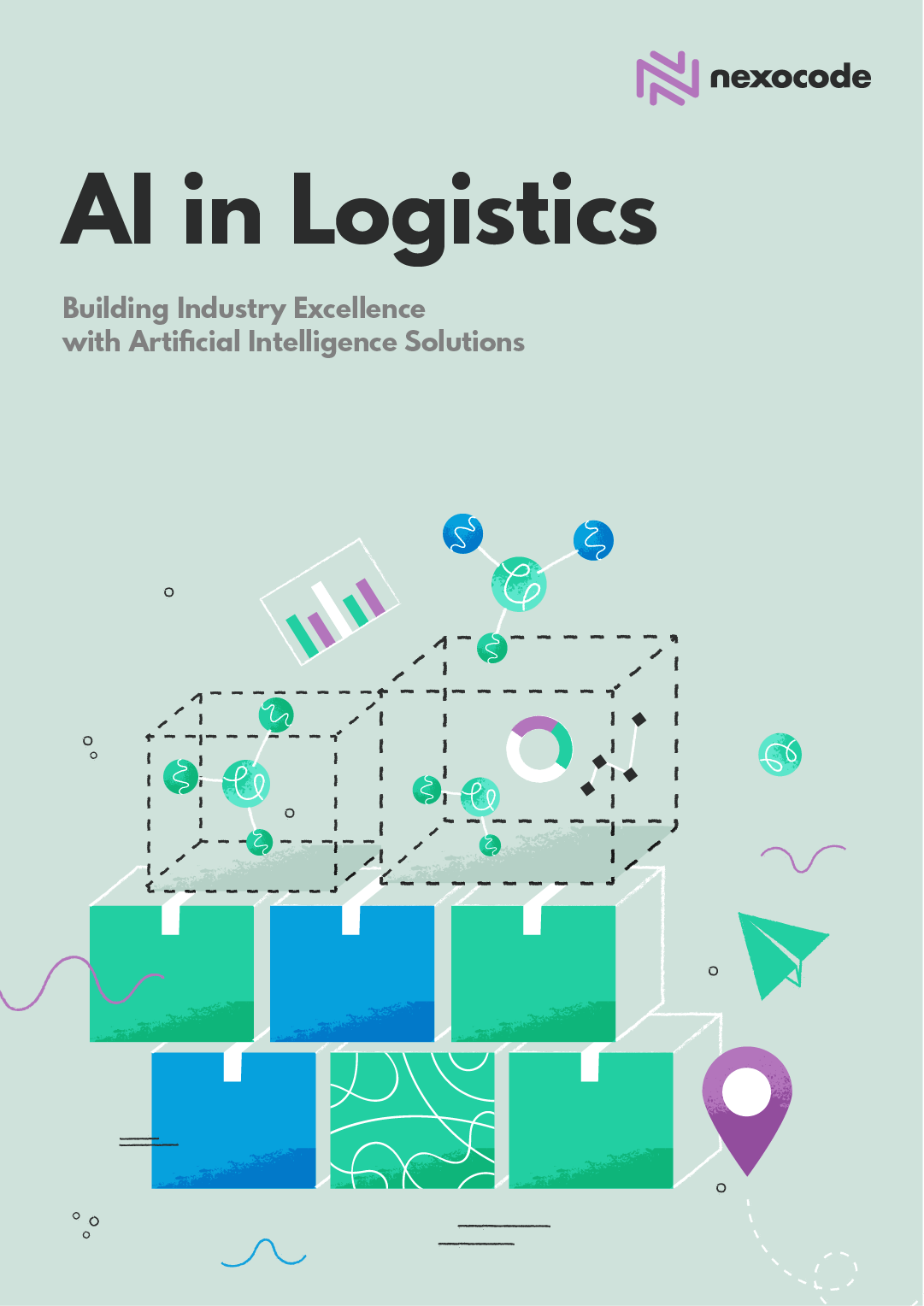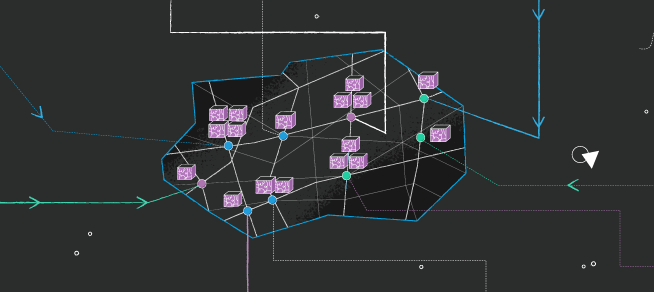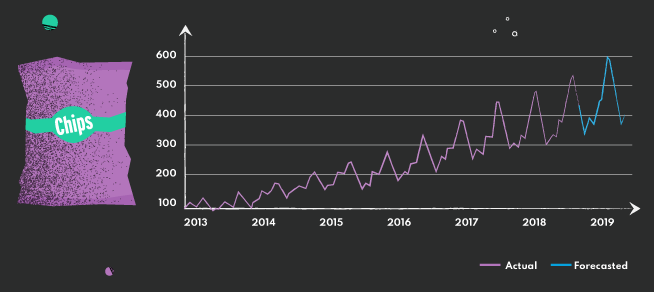Have you ever wondered how to navigate the complexities of AI integration and truly revolutionize your supply chain? In the fast-paced, ever-evolving world of business, staying one step ahead is critical to survival. AI-based demand planning promises that competitive edge, offering the ability to predict your business’ future demands with remarkable accuracy. This foresight has the potential to turn your supply chain processes into a well-oiled machine, delivering goods just when and where they’re needed. But is the journey to AI adoption as straightforward as we’d like it to be?
The reality is the route to this transformation is a maze filled with challenges. From ensuring high-quality and accurate data, overcoming the scarcity of skilled personnel, managing high implementation costs, and mitigating resistance to change, to seamlessly integrating AI with existing systems, the path is fraught with obstacles.
But fret not; this article serves as your compass, guiding you through these challenges and outlining strategic solutions that can lead your business to successful AI-based demand planning implementation. So, are you ready to embark on this thrilling journey toward supply chain transformation? Let’s delve in!
TL;DR
• AI-based demand planning is a powerful tool that can significantly improve the accuracy of and optimize supply chain networks. However, it comes with certain challenges like data quality, need for skilled personnel, high implementation costs, resistance to change, and integration with existing systems.
• The backbone of effective AI applications is high-quality and accurate historical data. Investment in robust data cleaning and preprocessing techniques and fostering a data-driven culture within the organization can ensure the reliability of data used in forecasting.
• Implementing AI-based demand planning requires a workforce well-versed in AI technology. This challenge can be met by upskilling the existing workforce that is comfortable with traditional forecasting methods. Resistance to change can slow down the adoption of AI-based demand planning. Transparency, open communication about the benefits of AI, and involving employees in the process can help alleviate such concerns.
• AI implementation costs can be daunting, and you need to make some risk assessment decisions and evaluate the long-term ROI of AI. A cost-benefit analysis can aid in informed decision-making. Costs associated with retraining machine learning models should also be taken into account.
• Integrating AI with existing systems can pose challenges in terms of compatibility and data security. Partnering with experienced AI solution providers can help to smoothly integrate AI technology with existing systems while ensuring data security.
• Ready to harness the power of AI in demand planning for your business?
nexocode’s AI experts have extensive experience in the logistics sector and can assist you in successful AI solutions implementation. Don’t hesitate to contact us and embark on your AI journey with confidence.
The Role and Significance of AI in Demand Planning and Supply Chain Management
Before delving into the challenges, let’s first understand what AI-based demand planning is and why it’s a game-changer in the supply chain landscape.
AI, or artificial intelligence, refers to the simulation of human intelligence processes by machines, especially computer systems. In the context of demand planning, AI can analyze vast amounts of data, identify patterns, and make accurate predictions about future demand. It’s a giant leap from traditional forecasting methods, offering a level of precision that’s simply unparalleled.
The Power of Predictive Analytics for Demand Forecasting
At the heart of AI-based demand planning is
predictive analytics, a process that uses data, statistical algorithms, and machine learning techniques to identify future outcomes based on historical data. This can encompass everything from analyzing seasonal trends and market changes to tracking shifts in consumer behavior and external factors such as economic indicators.
Boosting Efficiency and Profitability
The benefits of implementing AI in demand planning are immense. It allows businesses to better anticipate customer demand, leading to improved inventory management, fewer stockouts or overstock situations, reduced waste, and ultimately, increased efficiency and profitability.
Building a Resilient Supply Chain
Perhaps most importantly, AI-based demand planning can help businesses create a more resilient supply chain. With better demand forecasting, businesses can respond more effectively to sudden changes in the market, whether that’s a surge in demand, a global pandemic, or a disruption in supply. This resilience can provide a significant competitive advantage in today’s volatile business environment.
The Importance of High-Quality, Accurate Data in AI-Powered Demand Forecasting
Successful AI applications, including demand forecasting, are predicated on the
availability and accuracy of high-quality data. However, businesses frequently grapple with data inaccuracies, gaps, or biases, which can result in skewed forecasts. These flawed forecasts may lead to suboptimal decision-making, potentially increasing warehousing costs and causing lost sales.
Cleaning and Preprocessing Techniques: Refining Historical Data and External Data
Investing in rigorous data cleaning and preprocessing techniques can significantly enhance data quality and accuracy. Businesses should employ methods such as outlier detection, missing value imputation, and feature scaling to refine their historical data and external data. When it comes to demand forecasting, these techniques can help improve forecast accuracy, resulting in better supply chain management and customer satisfaction.
For example, machine learning algorithms can use cleaned and preprocessed historical sales data to identify patterns and trends that are instrumental in predicting future sales. Furthermore, when combined with external data sources like weather data or economic indicators, these forecasting methods can provide a more comprehensive view of demand patterns.
Exploratory Data Analysis: The Starting Point of Demand Forecasting
Conducting an
Exploratory Data Analysis (EDA) early in the demand forecasting project phase is paramount. EDA allows business executives to visualize the insights contained within their data, potentially revealing valuable information that can help optimize supply chain networks and decrease warehousing costs.
For instance, by analyzing historical sales data and external data sources like weather forecasts, businesses can identify correlations between demand patterns and external factors. This information can enhance forecasting models and reduce the risk of supply chain disruptions, contributing to a reduction in lost sales.
Cultivating a Data-Driven Culture: Ensuring Data Integrity and Availability
To ensure data integrity and availability, businesses must foster a
data-driven culture. This involves educating employees about the importance of accurate data entry and consistent data practices. It also includes investing in robust data management solutions to maintain, secure, and organize both existing data and newly acquired data.
Incorporating a data-driven culture within an organization ensures that forecasting solutions are grounded on reliable data, promoting the accuracy and reliability of machine learning models used in demand forecasting.
The Need for Skilled Personnel in AI Adoption for Demand Forecasting
The adoption of AI-driven demand forecasting is a transformative process that requires more than just the right technology. It also necessitates a skilled workforce that comprehends AI technology and can effectively implement it within the business context.
Upskilling Existing Workforce: Cultivating AI Competency In-House
One of the key strategies to ensure a successful AI-driven transformation is to upskill the existing workforce. In-house training programs can equip employees with the necessary AI skills, enhancing their ability to utilize AI-driven planning solutions effectively.
Upskilling can be particularly important for workforce planning and demand forecasting roles. When equipped with AI knowledge, this personnel can better utilize AI tools for improved accuracy in forecasting consumer demand and managing demand volatility. Moreover, a workforce proficient in AI can actively contribute to a continuous learning and innovation culture, driving the business’s long-term growth and adaptability.
Outsourcing to AI Solution Providers: Ensuring Successful AI Integration
Another viable strategy, especially for businesses lacking in-house AI expertise, is to
outsource AI implementation to external specialists. Partnering with AI solution providers, like nexocode, can ensure the successful integration and management of AI-driven demand forecasting.
AI solution providers bring in-depth expertise to the table, which can be particularly valuable when dealing with complex aspects such as integrating AI technology with existing systems or handling large and complex datasets. This partnership can also lead to significant cost savings, as it may reduce warehousing costs and increase the accuracy of demand forecasts, thereby optimizing stock levels and reducing wastage.
Costs Associated with AI Implementation in Supply Chain Management
The implementation of AI in supply chain management can come with significant expenses, posing a substantial barrier, particularly for small to medium-sized businesses. These costs can encompass the initial investment in AI technology, system integration, and skilled personnel and ongoing expenses like those associated with retraining machine learning models.
Cost-Benefit Analysis: Understanding the ROI of AI
A comprehensive cost-benefit analysis is vital for businesses to understand the potential
return on their AI investment. This process involves quantifying the costs associated with AI adoption and comparing them with the expected benefits. For instance, the reduction in supply chain costs due to more accurate demand forecasts can offset the initial AI implementation costs over time.
The analysis should also account for improved efficiency in supply chain planning, better customer demand satisfaction, and improved financial planning. Understanding the long-term benefits can enable businesses to make informed decisions about their AI investment.
The Costs of Retraining Machine Learning Models: An Ongoing Commitment
As the business environment and customer demand patterns evolve, AI models that drive demand forecasting must adapt accordingly. This requires periodic retraining of machine learning models, an aspect often overlooked during initial cost planning.
Market dynamics are ever-changing, and historical data patterns may shift or become obsolete. If machine learning algorithms aren’t retrained to align with these changes, their demand forecasts can become less accurate, impacting supply chain management efficiency. However, retraining models involves additional costs, including time, computational resources, and potentially, the acquisition of new external data.
Retraining costs can be minimized by implementing mechanisms to identify when retraining is needed, so models aren’t retrained more frequently than necessary. Automated monitoring systems can help track model performance and trigger retraining when performance drops below a specified threshold.
Navigating Organizational Resistance to Change in AI-Powered Demand Forecasting
A common barrier encountered during the implementation of advanced technologies, like AI-powered demand forecasting, is resistance to change. This resistance often stems from a lack of understanding about the technology, fear about job security, or simply discomfort with altering existing workflows. To alleviate these concerns, businesses should prioritize transparency, effective communication, and involvement at all levels of the organization.
Transparent Communication: Building Trust and Clarifying Benefits
Open and honest dialogue is key to overcoming resistance. This involves explaining the benefits of AI in demand forecasting and how it will streamline supply chain networks and improve overall business operations. When employees understand that AI-powered demand forecasting can lead to more accurate demand forecasting, thereby improving the efficiency of supply chains and minimizing wastage, they are more likely to support the change.
By also communicating how AI can support workforce planning - for instance, by freeing up employees from mundane tasks, allowing them to focus on more strategic, high-value activities - organizations can alleviate fears about job security. Reinforcing the message that artificial intelligence is a tool to augment human capabilities, not replace them, can help to quell any anxieties.
Involvement and Training: Fostering Ownership and Confidence
Involving employees in the implementation process and providing appropriate training can further help to reduce resistance. Employees engaged in the process are more likely to feel a sense of ownership and control over the changes, leading to increased buy-in.
Training is crucial in this regard. Supplying demand planners with the necessary skills to work with AI-powered demand forecasting systems will make them comfortable with the new technology and demonstrate the organization’s commitment to their professional development. This, in turn, can build confidence and reduce resistance to the new system.
Integration of AI for Demand Forecasting and Planning with Existing Systems
The fusion of AI technology into current systems often presents a complicated process that demands careful navigation. Two of the most prevalent issues include compatibility problems and data security concerns.
Dealing with Compatibility Issues
Not all systems were built with AI integration in mind. As a result, organizations often face compatibility challenges when integrating AI into their existing systems. These can range from minor data exchange hiccups to major system functionality disruptions.
Solution: Employing a middleware approach can help overcome compatibility issues. Middleware is software that acts as a bridge between different applications, allowing them to communicate and operate with one another. Implementing a middleware layer could ease the integration process and ensure that AI functionalities work smoothly with existing systems.
Addressing Data Security Concerns
AI integration often requires substantial data transfer and system access, raising legitimate concerns about data security. These concerns can become particularly prominent if the organization deals with sensitive information.
Prioritizing data encryption techniques, implementing secure access controls, and conducting regular system audits are crucial steps in ensuring data security. These steps can help protect the organization’s data during and after the AI integration process.
Partnering with Experienced AI Solution Providers
Given the complex nature of AI integration, partnering with seasoned AI solution providers can significantly simplify the process.
Experienced AI solution providers can draw on their extensive knowledge and practical experience to navigate integration challenges. They can advise on the best strategies for overcoming compatibility issues and guide the organization in implementing middleware solutions when needed.
AI solution providers can also bring their expertise in data security to the table. They can help organizations implement secure data transfer protocols, design effective access control systems, and set up regular system audits to ensure data security during the integration process.
Wrapping Up: The Journey Towards Optimal AI-Based Demand Planning
As we navigate through an increasingly complex business landscape, the imperative for accurate sales forecasts and demand forecasts becomes all the more evident. Advanced AI-powered forecasting can significantly enhance business operations by providing granular, real-time insights that are crucial for strategic decision-making.
A streamlined forecasting process, underpinned by AI, leverages data availability from a multitude of external data sources. This enriches the quality of input for the forecasting models, providing more accurate and reliable predictions. Coupled with robust data management practices, an effective forecasting solution can be established, enhancing demand sensing capabilities and facilitating inventory optimization.
AI also brings a wealth of benefits to the planning process. By using real-time data and sophisticated data science techniques, AI can identify and predict supply chain issues before they escalate. This not only minimizes disruption but also results in cost savings by reducing excess cash tied up in stock.
Industry specialists increasingly appreciate the role of AI in enhancing capacity planning and workflow automation. With AI’s ability to process and analyze vast amounts of data quickly and accurately, businesses can make timely and informed decisions to optimize resources, manage inventory, and meet customer demands effectively.
At this point, you may be considering taking your demand planning to the next level with AI. Partnering with experts in the field can ease your transition and ensure a successful implementation. nexocode’s team of AI experts, with their vast experience in logistics and supply chain projects, are equipped to help you leverage machine learning to revolutionize your demand forecasting and planning process. Don’t hesitate to reach out to us. We’re ready to guide you on your AI journey and help you unlock the full potential of AI-powered forecasting in your business operations. Remember, the key to success in this complex landscape is harnessing the power of AI and data. And we’re here to help you do just that.
Contact us today!









